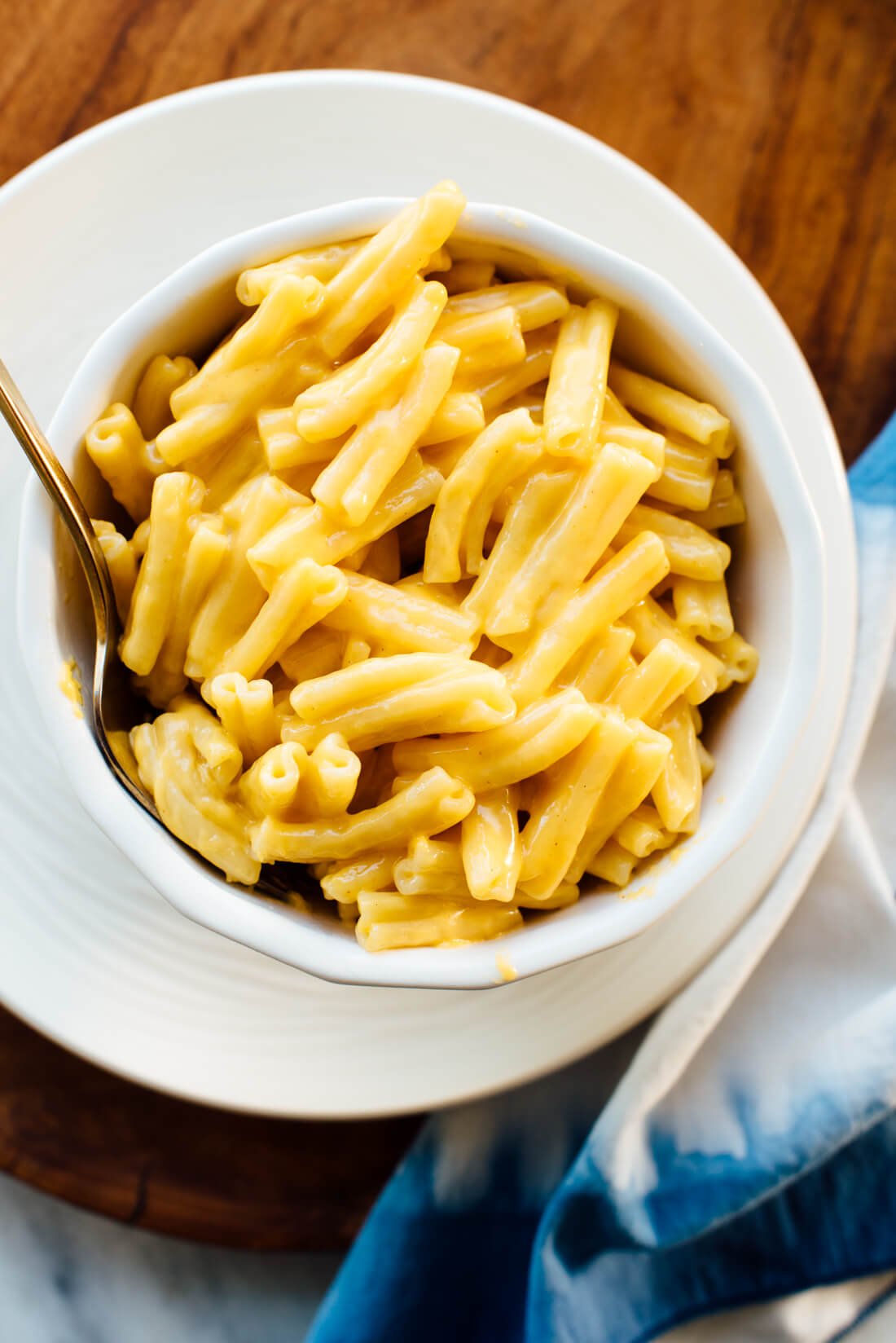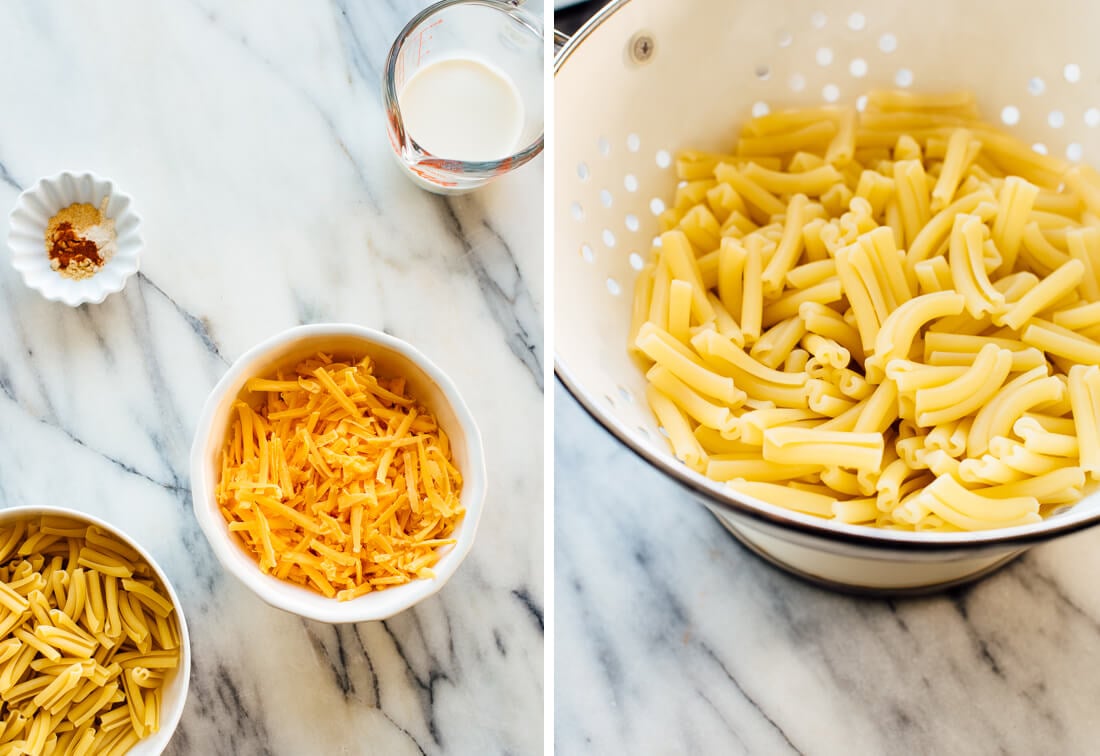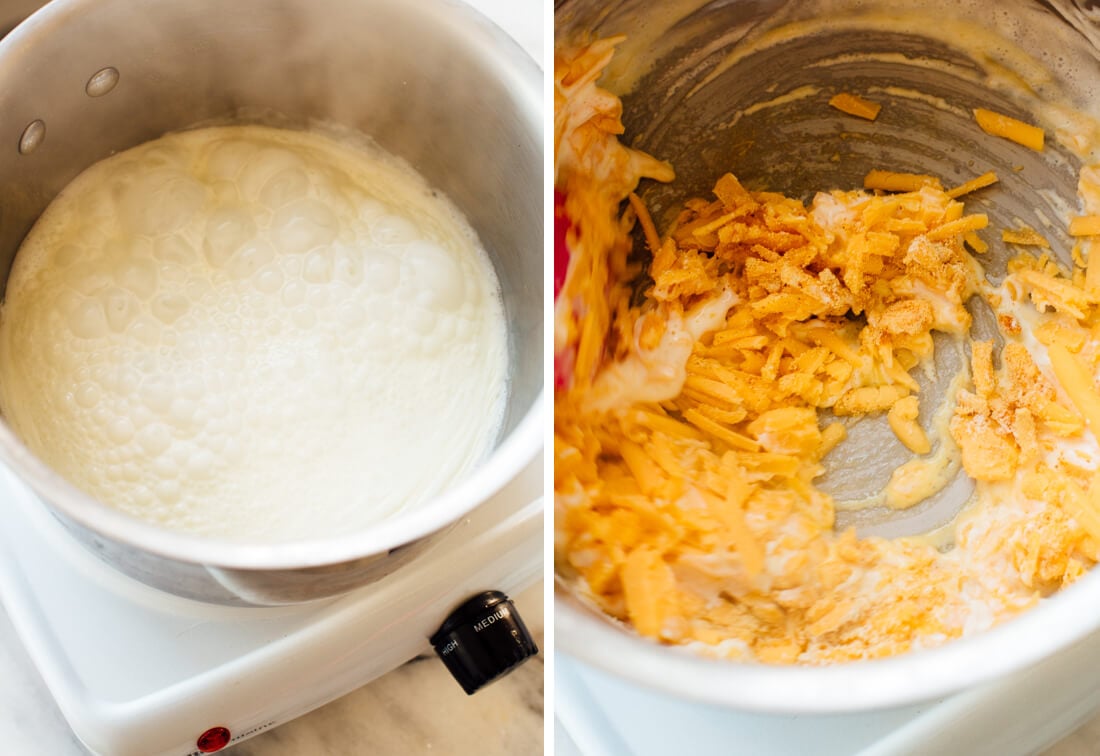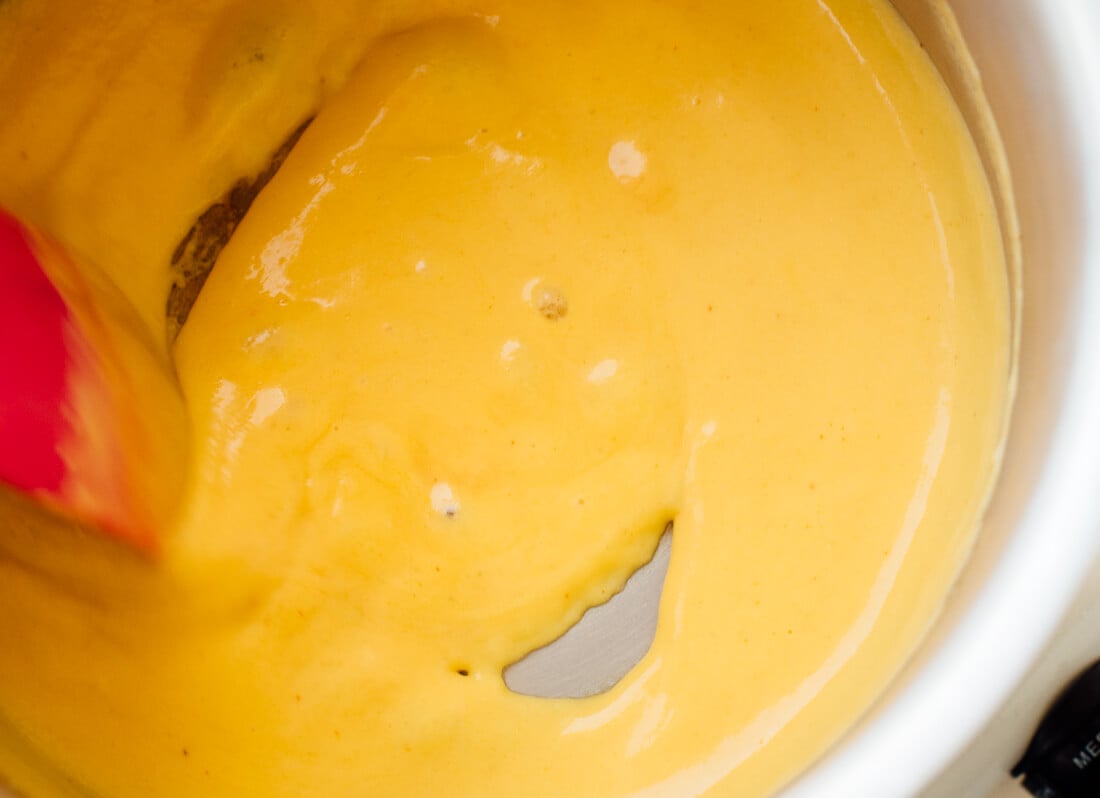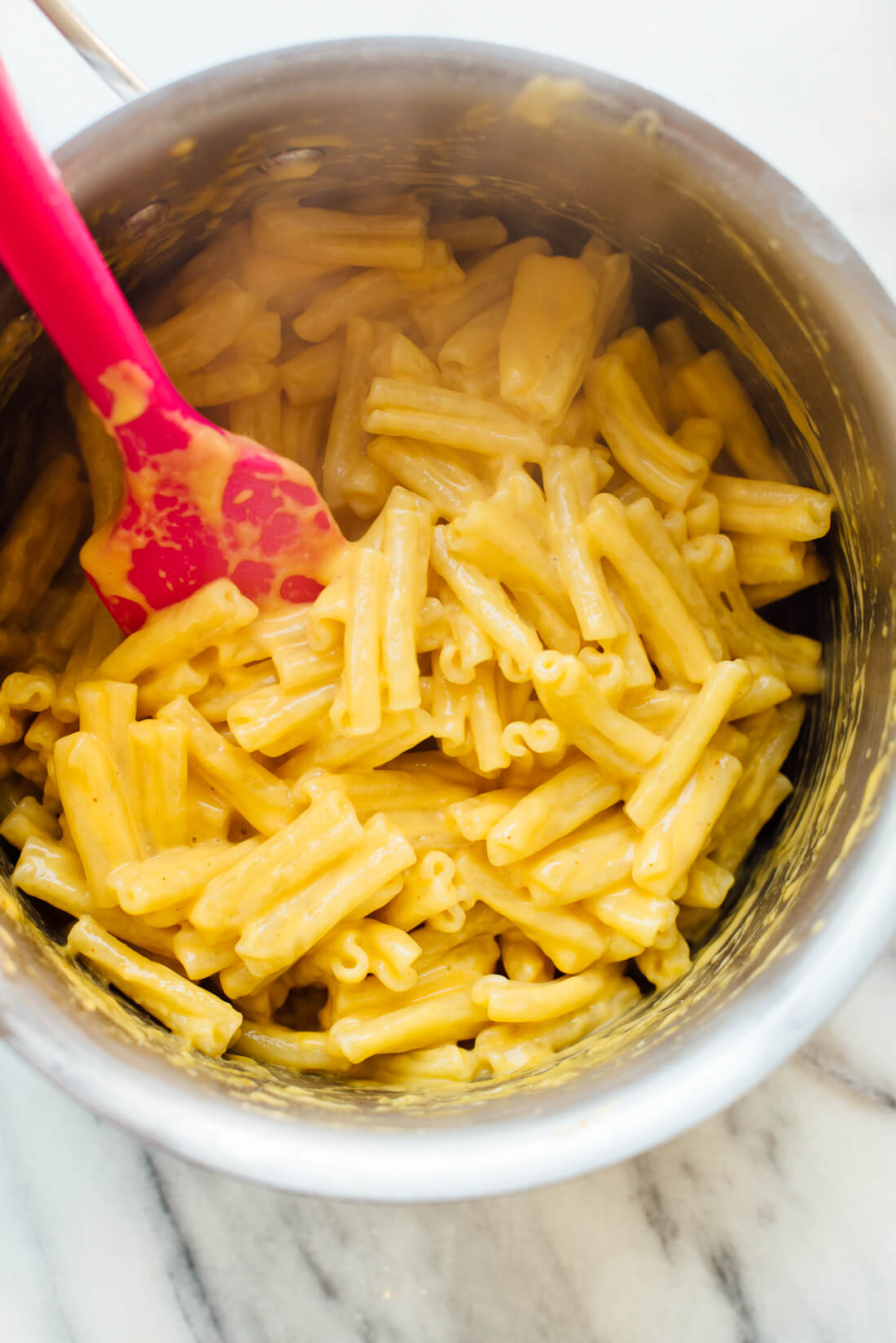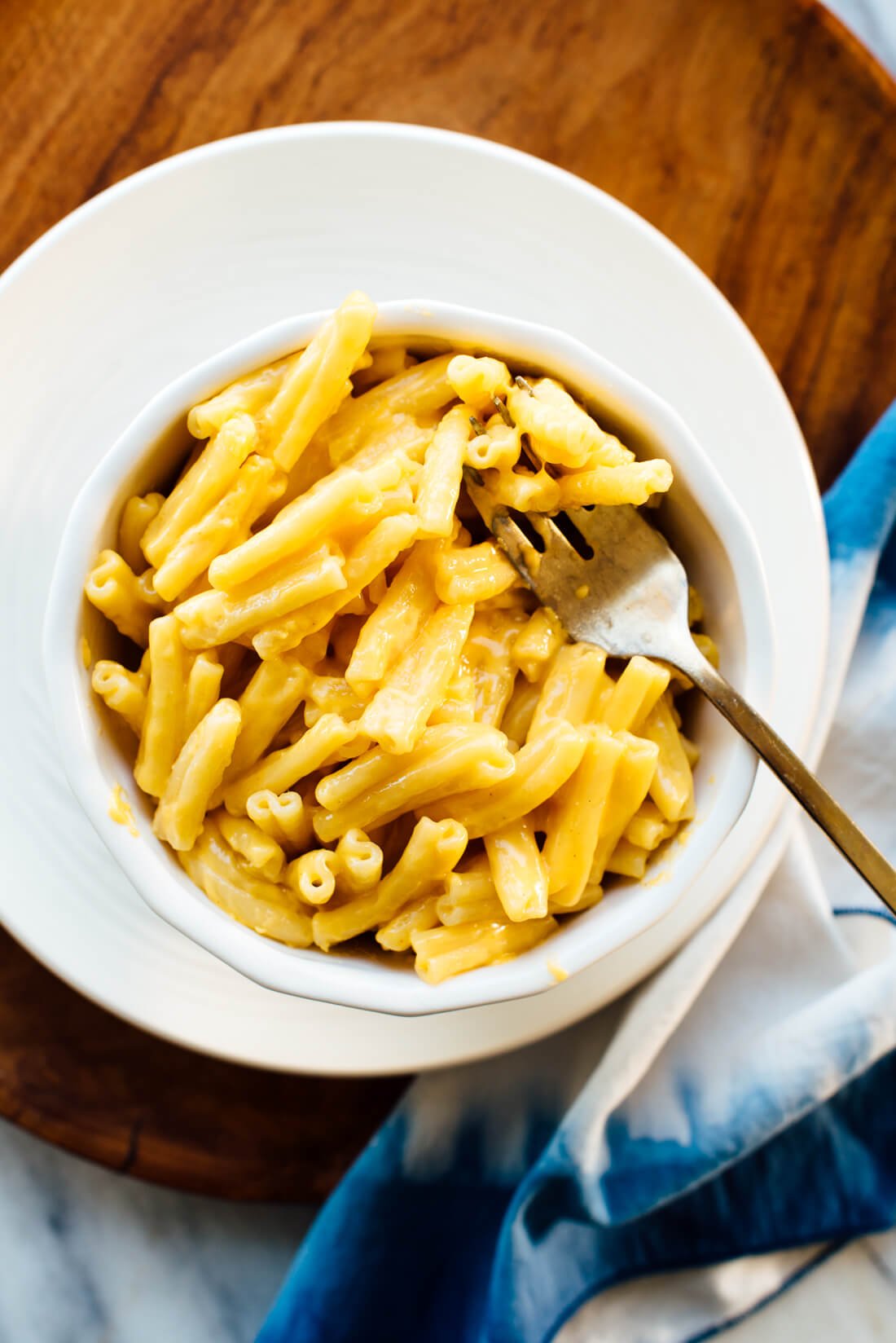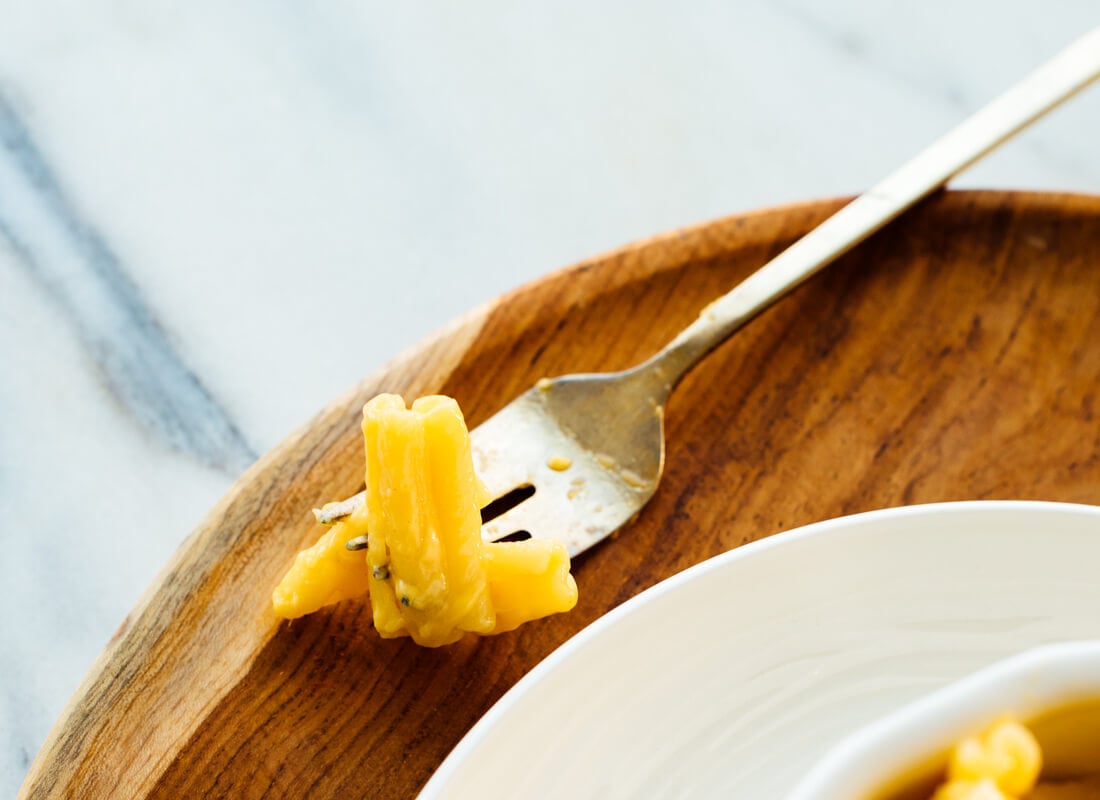Meet my all-time favorite mac and cheese recipe! This recipe has been in the works for over one year, no exaggeration. It has taken me that long to find my go-to mac and cheese method. I wanted a classic stovetop recipe, like the blue box mac and cheese I grew up enjoying. But, I wanted to make my stovetop mac and cheese with real ingredients. I wanted it to be creamy and deliciously cheesy—but not oozing with so much cheese that I had to take a nap afterward.
Here is my ultimate mac and cheese recipe, which meets all of the above requirements. I purposefully used yellow cheddar and noodles that remind me of the boxed variety. It’s made simply with cheddar cheese and cream, and a few subtle dried spices to ramp up the flavor. The best part? This mac and cheese could not be easier to make. Homemade mac and cheese for the win!
The Best Stovetop Mac and Cheese
Four reasons to love this mac and cheese recipe: I owe Melissa Clark credit for this technique. I stumbled across her stovetop mac and cheese recipe in her new book, Dinner: Changing the Game. It’s also available online at Food52. My changes? Her recipe calls for freshly grated nutmeg, but I found that mac and cheese needs a few other spices to be utterly irresistible: mustard powder, garlic powder and onion powder, and the tiniest pinch of cayenne pepper. That combination is subtle but makes a world of difference. Trust me. I also adjusted the method, since it was a little unreliable for me. This mac and cheese turns out perfectly every time as written below.
NOTES ON OTHER METHODS
Before I stumbled on this technique, I tried mac and cheese recipes with béchamel sauce, both stovetop versions and baked. No matter the recipe, the béchamel versions turned out somewhat grainy and floury-tasting. I also tried mac and cheese with evaporated milk, which seemed more like Velveeta than real cheese and left me with a stomachache. I tried mac and cheese with Monterey Jack, too, which offers less flavor than cheddar and produces an excessively gooey texture (that’s right—I didn’t want gloppy mac!). I tried some totally unconventional methods, too. I tried to get away with using pasta-cooking water instead of cream, and that left me with a stringy mess. I even tried mac and cheese recipes with cauliflower purée or yogurt, and those were not mac and cheese. My simple cheddar-and-cream version is by far the best!
Stovetop Mac and Cheese Tips
Use quality cheddar cheese. The cheese is the predominant flavor here (and rightly so). I prefer sharp or extra-sharp cheddar cheese for maximum cheddar flavor. Grate the cheese by hand. Pre-shredded cheese is coated with starch or cellulose to prevent the shreds from sticking together. Those unnecessary ingredients can prevent you from obtaining a perfectly creamy melted cheese sauce. Better pasta makes better mac and cheese. I love Montebello’s organic strozzapretti noodles (affiliate link/those are the noodles you see in these photos). I buy them at Natural Grocers or my local health food store. Make sure your ingredients are measured and ready. This recipe comes together so quickly. You won’t have time to measure the ingredients before it’s time to add the next one! Don’t overcook the cream. Letting the cream boil too long reduces the moisture content to the point that the cheese sauce ends up stringy. Start the one-minute timer once it starts boiling (which might be the second the cream hits the pan) and you will end up with perfect sauce.
Want to lighten up this mac and cheese?
This mac and cheese is made with real cheese and real cream. It’s insanely delicious and worth it. That said, here are a few ideas on how to make it more nutritionally redeeming: Substitute half and half for the heavy cream. Half and half is equal parts heavy cream and whole milk. Your mac and cheese won’t be quite as creamy or rich, but it’s still very good. Add veggies! Reduce the amount of pasta to 6 ounces. Add 1 1/2 to 2 cups chopped broccoli florets (from 1 head of broccoli) or 1 cup fresh or frozen peas to the pasta pot when just 2 to 3 minutes of pasta cooking time remain. Drain and stir into the cheese sauce as directed. Or, stir 1 to 2 cups roasted or cooked vegetables in at the end. Roasted Brussels sprouts are great. Use high-quality ingredients. Grass-fed dairy tends to be higher in healthy Omega-3s. Buy organic cheese and cream to avoid added growth hormones. Use whole grain pasta. This won’t reduce the calories or fat, but it will add whole grains and increase the fiber content. That will make the mac and cheese more filling. My favorite brands of whole wheat pasta are DeLallo and Bionaturae. Use a more voluminous noodle shape. (Such as rotini, fusilli or chiocciole.) This won’t reduce the calories or fat, either, but it makes it seem like you’re eating more pasta because it fills more of your bowl. If you swap other noodle shapes for the macaroni, measure them in ounces (8 ounces is usually half of the box) instead of cups (you’ll need more than 2 cups; the exact number depends on the shape).
OTHER OPTIONS
Looking for a plant-based mac and cheese recipe? This recipe is not a good candidate for making vegan, but I highly recommend my vegan mac and cheese recipe—it’s a creamy stovetop mac and cheese like this one. Looking for lighter, veggie-packed pasta dishes? I have lots of pasta recipes for you!
This mac and cheese has become a staple recipe in my kitchen and I hope it becomes your go-to mac and cheese, too. Please let me know how you like this mac and cheese in the comments! Your star ratings with your comment are tremendously helpful, too.
Watch How to Make Mac and Cheese
Change it up: To make this mac and cheese a little more sophisticate, sprinkle your bowls with some finely grated Parmesan cheese and toasted bread crumbs. See my note above in the “lighten-up” section on how to incorporate broccoli or other veggies. How to reheat: This mac and cheese is best enjoyed fresh, but you can gently reheat it in the microwave or on the stove. Don’t overdo it; the ingredients are more likely to separate if they are overheated.

